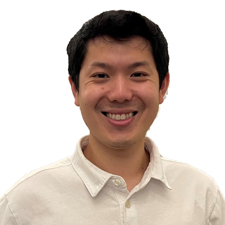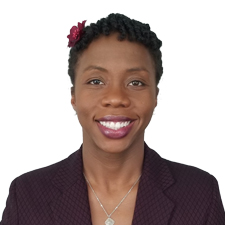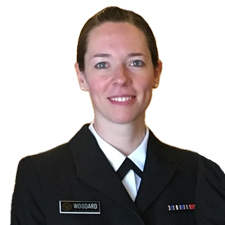Explore Life at CDRH
CDRH offers an array of career opportunities, and we value the expertise that our employees possess. Because of these highly skilled individuals, the FDA can successfully protect and promote public health.
As a prospective employee, you may be wondering what it’s like to work at CDRH. Our high-performing, diverse workforce will tell you in their own words.
RDML Sean Boyd, USPHS
- Director, Office of Regulatory Programs (ORP), Office of Product Evaluation and Quality (OPEQ)
-
Q: When did you join CDRH?
A: I joined CDRH in 1999 as a medical device and electronic product compliance reviewer, after starting my career with FDA in the Winchester Engineering and Analytical Center outside of Boston, MA in 1994.
-
Q: What are you most proud of in terms of your work at CDRH?
A: I am most proud of having played a part in developing our current OPEQ structure, where we evaluate devices and electronic products across the total product lifecycle. This framework allows us to knit information together across product design and development, premarket evaluation, ensuring quality and compliance of products and manufacturing practices through assessment of product performance in the real world. Over my career I’ve seen many innovative products come to market that have benefitted patients across the globe, while also taking steps to correct or remove products that present safety risks to the public. We’ve done this in partnership with our stakeholders, and through the dedicated work of amazing individuals who are invested in our mission to protect and promote the public health.
-
Q: How would you describe CDRH in one word?
A: Finding a single word is tough… I’d offer “integrity.” Integrity of our people who are committed to doing what’s right for our customers. And, Integrity of our programs that are accountable for the same, while providing transparency of the information we have and decisions we make to the public.
Enusha Karunasena
- Research Scientist/Microbiologist for the Office of Science and Engineering Laboratories (OSEL)
-
Q: What do you do at CDRH?
A: I’m a research scientist in OSEL, and I work on several interesting regulatory research projects. I’m also the co-lead, along with Poulomi Nandy, for the Health of Women (HoW) Community of Practice (CoP), where we feature talks on medical devices important to women’s health and sex-specificity.
-
Q: What is a typical day like?
A: I try to balance my workday by prioritizing research. I don’t know that I’d enjoy science without interacting with the determination and imagination of young minds. The best part of my daily routine is working with a wonderful team of ORISE (Oak Ridge Institute for Science and Education) fellows. My day also includes contributing to different arms of regulatory science internal and external to CDRH/FDA, such as regulatory standards, fostering communities of practice, developing a better sense of subject matter priorities, interacting with scientists trying to address similar research goals, as well as learning from colleagues through research collaborations.
-
Q: What do you love about working at CDRH?
A: My colleagues, the opportunity to work with talented ORISE fellows, and serving public health are the things I genuinely love—nothing works without collaboration and receptivity to folks with talents at all stages of career. I respectfully value the fluidity of knowledge exchange among my colleagues and also the energy and determination from the fellows that I work with.
-
Q: How would you describe CDRH in one word?
A: Fluid.
Samuel Lum
- Standards Advisor and Engineer, Office of Readiness and Response (ORR), Office of Strategic Partnerships and Technology Innovation (OST)
-
Q: What do you do at CDRH?
A: I work for the CDRH standards management program in the Office of Readiness and Response. I advise on standards development and policy, especially as it relates to my area of sterility, neurological, and physical medicine devices. I also co-lead events through our standards community, which I helped to create. My work gives me autonomy to bring people from across government, industry, civil society, and scientific labs together to develop effective national and international standards. These go on to support high-quality, safe, and effective medical devices. As a hard-of-hearing engineer, I also volunteer time on disability advocacy work — both inside and outside of the FDA.
-
Q: What is a typical day like?
A: I work from home, but I have flexibility to attend to my awesome service dog. During the day, I am usually analyzing data, managing different committee work, planning impactful events, and working on projects with my team. We all meet up regularly, and there’s never a dull moment with them.
-
Q: How would you describe CDRH in one word?
A: Inspiring.
Aftin Ross
- Deputy Office Director, Office of Readiness and Response (ORR), Office of Strategic Partnerships and Technology Innovation (OST)
-
Q: When did you join CDRH?
A: I joined CDRH in the fall of 2013 as a Commissioner’s Fellow. I originally worked as a member of the emergency medical countermeasures program in the Office of the Center Director and this program would eventually end up being part of OST in the 2019 CDRH reorganization.
-
Q: What do you do at CDRH?
A: As a Deputy Office Director, I help set the strategic direction and coordination for cross-cutting programs such as:
- Medical device cybersecurity
- Standards
- Emergency preparedness and response
My work also helps the Center to meet its strategic priorities to enhance health equity and enhance organizational agility and resilience. I also enjoy public speaking and highlight the many ways CDRH is positively impacting public health in the panels and podcasts I participate in.
- Q: What is a typical day like?
A: My day varies a lot which is one of the reasons why I love my job. Each day brings opportunities to learn about new topics and engage with diverse stakeholders.
-
Q: What skills have you found vital to your job?
A: With the rapidly evolving technology landscape and quite frankly the world at large, getting comfortable being uncomfortable has greatly benefited me in my career, relationships, and personal goals. In fact, putting myself outside my comfort zone is how I began working in medical device cybersecurity and the public health impacts resulting from this work, are some of my proudest accomplishments.
Elim Thompson
- Staff fellow for the Office of Science and Engineering Laboratories (OSEL)
-
Q: What do you do at CDRH?
A: I support lead reviewers by reviewing regulatory submissions concerning artificial intelligence (AI)/machine learning (ML) algorithms and performance testing. I also conduct research to advance regulatory science by developing evaluation methods that helps demonstrate device effectiveness in regulatory submissions.
-
Q: How did your career begin at CDRH?
A: Luck played a surprising role in reshaping my career. With a background in particle physics, I never envisioned my skills intersecting with the mission of FDA/CDRH to protect and promote public health. My life was drastically changed when my mentor, Dr. Frank Samuelson, stumbled upon my resume online and contacted me for a potential position within OSEL’s Division of Imaging, Diagnostics and Software Reliability (DIDSR). This unexpected opportunity made me realize that the same concepts that unravel the mysteries of the universe could also be applied to help patients in our country.
-
Q: What are you most proud of in terms of your work at CDRH?
A: I am most proud of my work on developing an evaluation framework to assess the time-saving effectiveness of Computer-Aided Triage and Notification (CADt) devices. These devices are intended to reduce patients’ wait-time in a radiologist reading list, and its time-saving effectiveness is critical in saving lives of patients with time-sensitive conditions. I feel honored to contribute to CDRH’s mission by helping reviewers understand the potential time-savings of CADt devices in pre-market submissions before they are deployed to the real-world clinics.
-
Q: How would you describe CDRH in one word?
A: Innovative.
LCDR Lauren Woodard, USPHS
- Team Lead of the Neurodegenerative Devices Team in the Office of Product Evaluation and Quality (OPEQ), Office of Neurological and Physical Medicine Devices, Office of Product Evaluation and Quality (OHT5)
-
Q: What do you do in CDRH?
A: My role is to lead the team in the review of scientific data contained in premarket and postmarket submissions for medical devices to ensure their safety and effectiveness. I serve as a source of information and guidance on medical device-related issues related to devices under the team’s purview. I also help plan, coordinate and evaluate the program activities of the team and act in the Assistant Director’s stead when needed.
-
Q: What skills have you found vital for your job?
A: I began my career at the FDA in the Center for Drug Evaluation and Research (CDER) in 2015 and transferred to CDRH in 2020. Scientific reasoning and critical thinking skills are key for success in both CDER and CDRH. Even though my background is in synthetic organic chemistry and is not related to engineering or medical devices, the scientific reasoning and critical thinking skills that I obtained during graduate school and honed further during my post-doctorate studies and my time in CDER enabled me to take the leap from CDER to CDRH, since the end goal is the same in both centers: Safety and Effectiveness.
-
Q: How would you describe CDRH in one word?
A: Collaborative!






